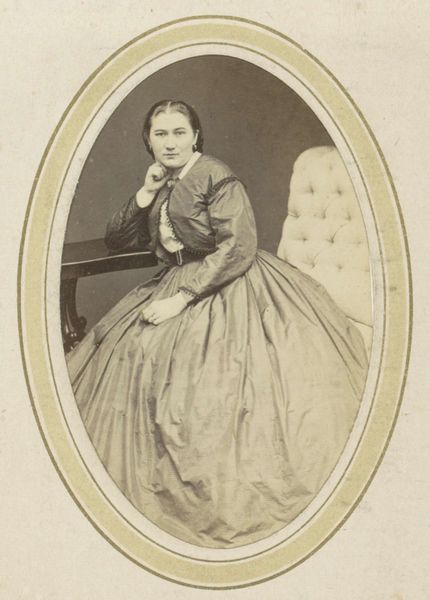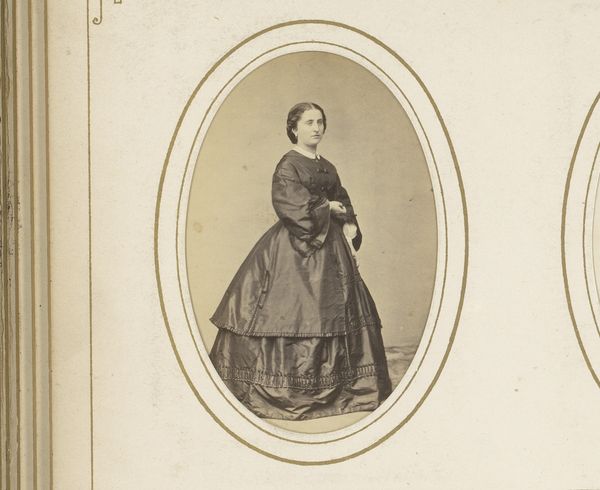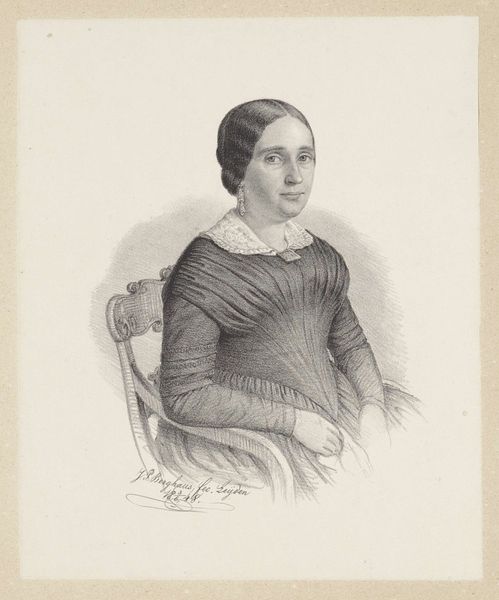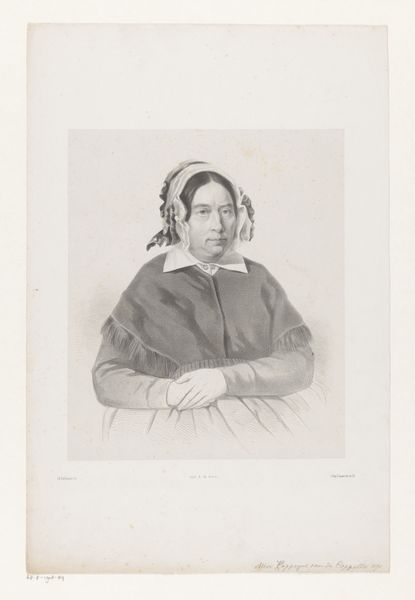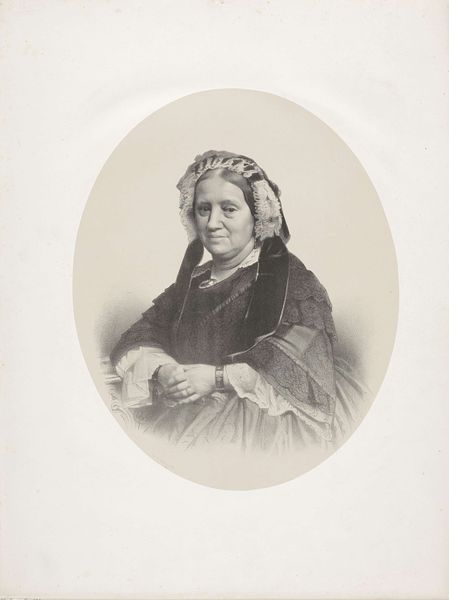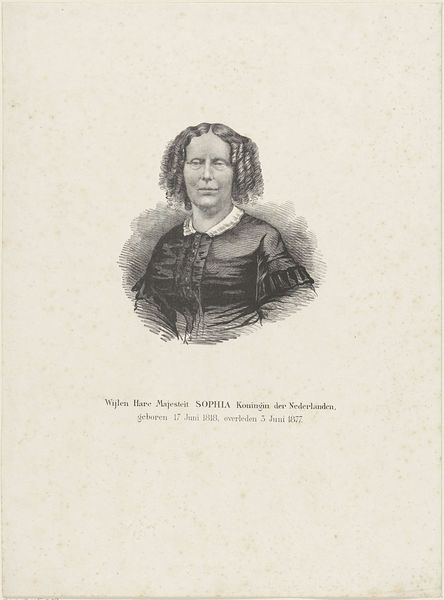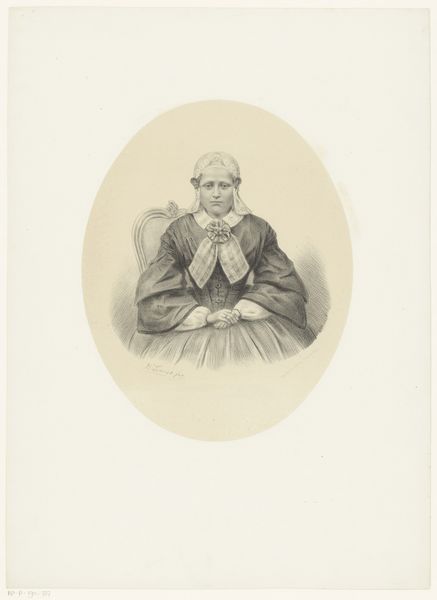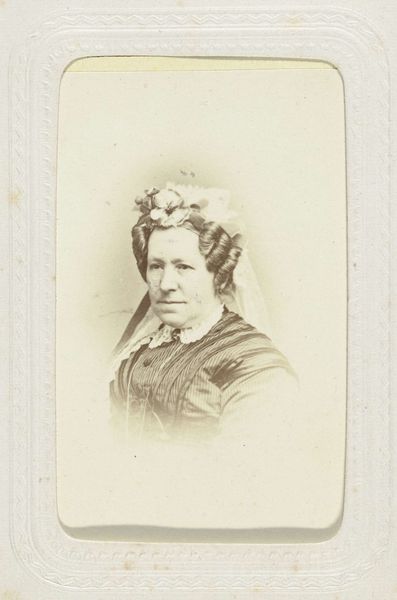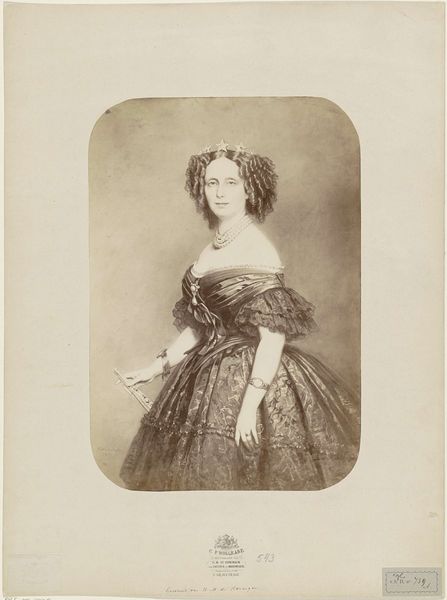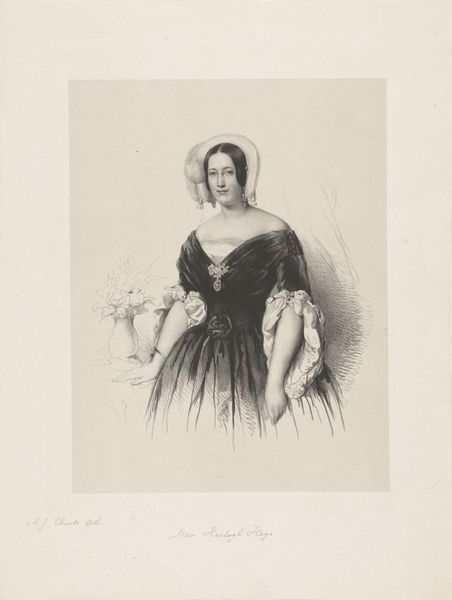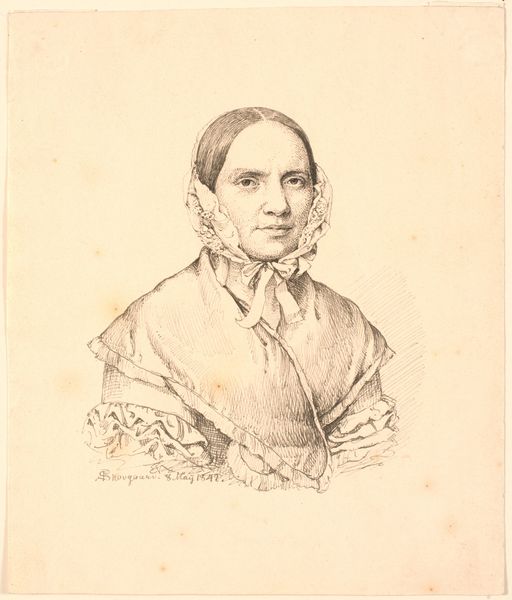
Portret van Anna Louisa Geertruida Bosboom-Toussaint Possibly 1854 - 1859
0:00
0:00
drawing, graphite
#
portrait
#
drawing
#
pencil drawing
#
graphite
#
academic-art
#
graphite
#
realism
Dimensions: height 335 mm, width 256 mm
Copyright: Rijks Museum: Open Domain
Editor: This is Johann Peter Berghaus's portrait of Anna Louisa Geertruida Bosboom-Toussaint, probably made sometime between 1854 and 1859, using graphite. I'm struck by the quietness of it. It’s very detailed for a pencil drawing, yet it feels reserved, almost solemn. What stands out to you? Curator: I see a carefully constructed image, pregnant with symbols of its time. Notice the bonnet; it’s not just headwear, it speaks to modesty, a virtue highly valued then. Her hands, clasped, but holding what seems to be a piece of paper... could that be a manuscript? What might *that* symbolize? Editor: Perhaps her profession as a novelist? I hadn't considered that the paper itself could be symbolic. Curator: Precisely. Consider the cultural context. The 19th century wrestled with women’s roles. Here, we see a portrait that, on the surface, appears traditional but hints at something more—intellectual pursuits, a voice within the domestic sphere. Editor: So, even within the confines of a traditional portrait, there's a subtle suggestion of her breaking those boundaries. The clothing is dark; would that have any significance, too? Curator: The dark clothing could indicate mourning, seriousness, or simply the somber tones considered appropriate for a portrait of a woman of letters at the time. The greyscale lends an intellectual and respectable feeling, and a sense of importance, no? What does the drawing tell us about her placement in society? Editor: It’s fascinating how much information is packed into what I initially perceived as just a simple portrait. Now, I see a conversation about gender roles, intellect, and societal expectations happening beneath the surface. Curator: Indeed. The image acts as a cultural mirror, reflecting societal values and aspirations. What hidden stories do you now see emerging?
Comments
No comments
Be the first to comment and join the conversation on the ultimate creative platform.
